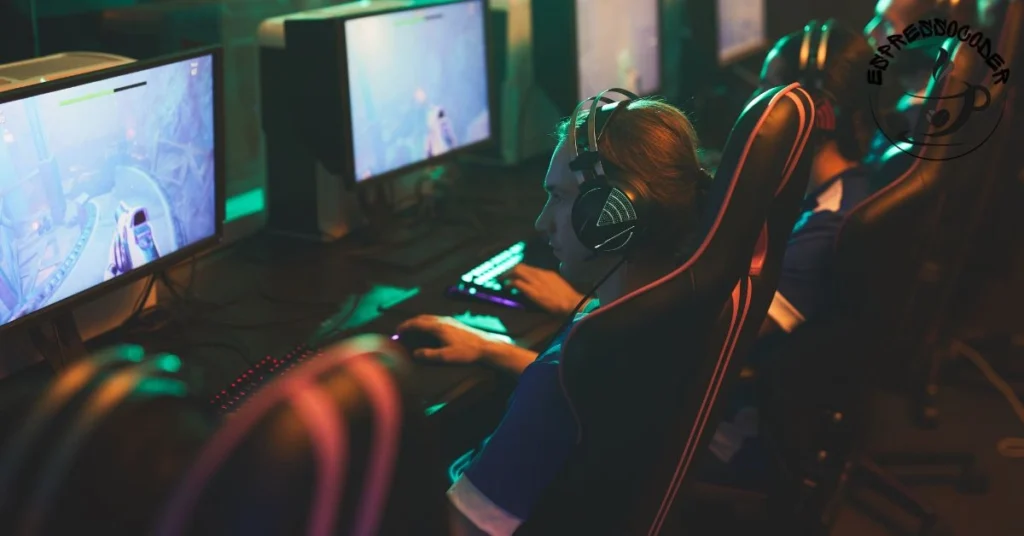gamemakerblog.net is a powerful tool for aspiring game developers. It allows users to create 2D games without needing extensive programming skills. Whether you are a beginner or have some experience, GameMaker Studio can help you bring your ideas to life. This blog post on gamemakerblog.net will guide you through the essential steps to make your first game.
Many people dream of developing their own games. However, getting started can be overwhelming. There are so many tools and resources available that it is hard to know where to begin. GameMaker Studio simplifies the process by providing a user-friendly interface and a strong community of developers.
In this guide, we will explore various aspects of using GameMaker Studio. You will learn how to set up your development environment and understand the basics of game design. We will also cover programming concepts in GameMaker Language (GML) and how to create your first game.
By the end of this post, you will have a solid foundation to start your game development journey. You will also discover useful resources for further learning. Let’s dive in and unlock your potential with GameMaker Studio!
Also read:https://espressocoder.org/deborah-hoffman-volleyball-coach-floresville/
Understanding gamemakerblog.net
Overview of GameMaker
gamemakerblog.net is a game development platform designed for creating 2D games. It provides a range of tools to help developers build games quickly. Users can create games for multiple platforms, including PC, mobile, and consoles. This flexibility makes it a popular choice for indie developers.
Features and Advantages
GameMaker Studio offers many features to simplify game development. Its drag-and-drop interface allows users to create games without extensive coding knowledge. It also includes a powerful scripting language called GameMaker Language (GML) for more advanced functions. Additionally, the software supports animations, physics, and networking.
Supported Platforms
With GameMaker, you can publish your games on various platforms. These include Windows, macOS, Android, iOS, and HTML5. This cross-platform capability means you can reach a wider audience. It allows you to share your creations with players around the world.
Comparison with Other Game Engines
GameMaker is often compared to other game engines like Unity and Unreal Engine. Unlike these engines, GameMaker focuses primarily on 2D game development. It is easier to learn for beginners. If you are looking to create 2D games quickly, GameMaker Studio is a great option.
Setting Up Your Environment
Installing GameMaker Studio
To get started, you need to install GameMaker Studio. Visit the official GameMaker website to download the software. There are free and paid versions available, depending on your needs. Follow the installation instructions to set up the program on your computer.
User Interface Overview
Once installed, open GameMaker Studio to explore the user interface. The main window is divided into several sections, including the workspace and asset manager. The workspace is where you create and edit your game. The asset manager helps you organize game elements like sprites, sounds, and scripts.
Key Components
Familiarize yourself with key components in GameMaker Studio. The Room Editor allows you to design game levels. The Sprite Editor is used to create and edit graphics. Understanding these components will make it easier to build your game.
Optimizing Your Workspace
To improve your workflow, optimize your workspace settings. You can arrange windows according to your preferences. Use shortcuts to access tools quickly. A well-organized workspace will help you focus on creating your game more efficiently.
Game Design Fundamentals
Importance of Planning
Planning your game is a crucial first step. It helps you clarify your ideas and organize your thoughts. A solid plan can save you time and effort later in development. Take the time to outline your game concept before diving into design.
Key Elements of Game Design
There are several key elements to consider in game design. These include game mechanics, story, characters, and art style.
- Game Mechanics: Mechanics define how players interact with the game. They include rules, objectives, and controls. Understanding these elements will guide your gameplay design.
- Story: The story provides context and motivation. It can be simple or complex, depending on your game. A strong narrative can engage players and keep them invested.
- Characters: Characters give life to your game. They can be protagonists, antagonists, or NPCs (non-player characters). Creating relatable and interesting characters enhances the player experience.
- Art Style: The art style sets the visual tone of your game. It can range from pixel art to hand-drawn graphics. Consistent and appealing visuals are essential for attracting players.
Creating a Game Design Document (GDD)
A Game Design Document (GDD) is a helpful tool for developers. It outlines all aspects of your game in detail. Your GDD should include information about gameplay, levels, art, and sound.
- Gameplay: Describe the core gameplay loop and player objectives. Outline how mechanics work together to create an engaging experience.
- Levels: Detail the structure and layout of your game levels. Include information about puzzles, challenges, and progression.
- Art and Sound: Specify your vision for the art style and sound design. Mention the type of music and sound effects you want to use.
This document acts as a reference point throughout your development process. It keeps your team aligned and focused on your game vision.
Iterative Design Process
Game design is often an iterative process. This means you may need to revise your ideas based on testing and feedback. Playtesting your game will help you identify areas for improvement.
- Playtesting: Gather players to test your game. Observe how they interact with it and take notes on their feedback. This will help you pinpoint strengths and weaknesses.
- Revisions: Use the feedback to make necessary adjustments. This could involve tweaking mechanics, enhancing visuals, or refining the story. Iterating on your design will lead to a better final product.
Embrace this process to enhance your game and create a better player experience. It encourages creativity and allows for continuous improvement throughout development.
Conclusion
gamemakerblog.net is an excellent choice for aspiring game developers. It simplifies the game development process, making it accessible for beginners. By understanding the fundamentals of game design, you can create engaging and enjoyable experiences for players. Planning your game, focusing on key elements, and creating a Game Design Document are vital steps in this journey.
Remember that game development is an iterative process. Embrace playtesting and feedback to refine your game and enhance the player experience. With dedication and practice, you can bring your unique game ideas to life.
As you move forward, continue exploring resources and connecting with the game development community. There is always more to learn and discover. Start your adventure with GameMaker Studio today, and unleash your creativity in the exciting world of game development!
FAQs
What is gamemakerblog.net?
gamemakerblog.net is a game development platform that allows users to create 2D games. It offers a user-friendly interface and a variety of tools for both beginners and experienced developers.
Do I need programming skills to use GameMaker?
No, you don’t need extensive programming skills to start with GameMaker Studio. The drag-and-drop feature allows you to create games without coding. However, learning GameMaker Language (GML) can help you implement more complex mechanics.
Can I publish my game on multiple platforms?
Yes, GameMaker supports publishing on various platforms, including Windows, macOS, Android, iOS, and HTML5. This allows you to reach a wider audience.
How do I start learning GameMaker?
You can start by downloading GameMaker and exploring its tutorials. There are many online resources, including forums, YouTube channels, and blogs that offer guidance for beginners.
What is a Game Design Document (GDD)?
A Game Design Document (GDD) is a detailed outline of your game. It includes elements like gameplay mechanics, story, characters, and art style. A GDD helps keep your development process organized and focused.







